Key takeaways:
- Middle Eastern dips reflect rich culinary traditions and create communal bonds when shared during gatherings.
- Quality ingredients, like premium tahini and fresh herbs, significantly enhance the flavor and texture of dips.
- Techniques such as proper blending and letting dips rest can elevate their taste, while presentation plays a crucial role in inviting guests to enjoy the dips.
- Experimenting with unique ingredients and textures can transform classic dips into extraordinary culinary experiences.
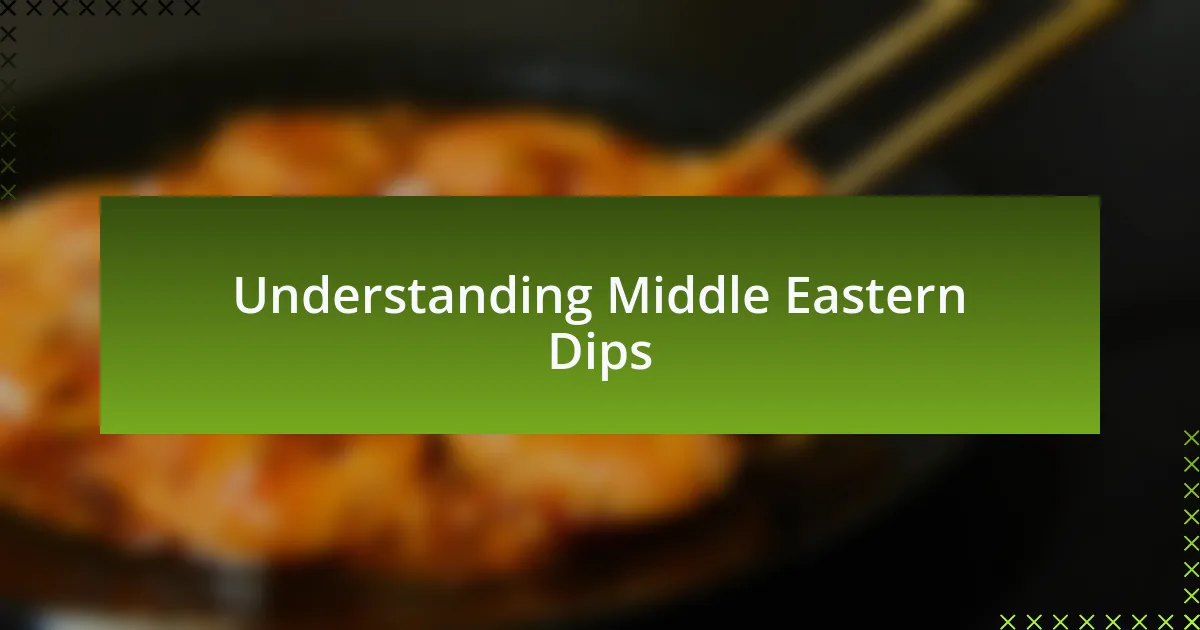
Understanding Middle Eastern Dips
Middle Eastern dips are a delightful fusion of flavors and textures, reflecting the rich culinary heritage of the region. Take hummus, for example—it’s not just a simple blend of chickpeas and tahini; it’s a canvas where spices, fresh herbs, and a drizzle of olive oil mingle in harmony. I still remember the first time I tasted a homemade version, bursting with flavors that transported me straight to a bustling market in Istanbul.
Each dip tells a story, often tied to tradition and communal gatherings. Think about baba ghanoush; its smoky depth comes from grilling the eggplant, making each bite a celebration of love and labor. Have you ever noticed how sharing these dips creates a bond over the table? I’ve often found that serving a platter of assorted dips can break the ice at gatherings, inviting everyone to dip in together.
Moreover, the versatility of these dips can’t be overlooked. Whether served with warm pita, crunchy vegetables, or as part of a lavish mezze spread, they adapt beautifully to any occasion. I find joy in experimenting with different ingredients, like adding roasted garlic or a hint of lemon to my hummus, transforming it into something uniquely my own. What’s your favorite twist on these classic recipes?
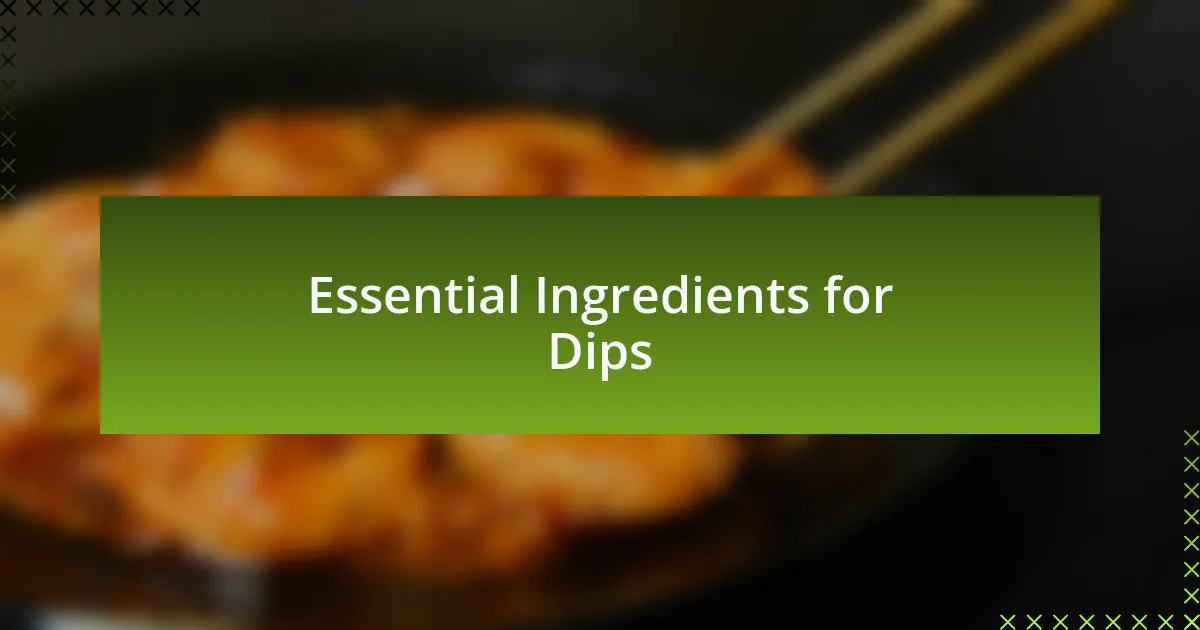
Essential Ingredients for Dips
The essential ingredients for a flawless Middle Eastern dip often start with a solid base, like chickpeas for hummus or roasted eggplant for baba ghanoush. I’ve learned that using high-quality tahini can completely elevate the flavor, lending a creamy texture that wraps around the spices beautifully. Have you ever experimented with different brands? Some brands have that nutty richness that simply makes the dip sing.
Spices play a crucial role as well, with cumin and paprika bringing warmth and depth. I vividly remember my first time incorporating smoked paprika into my baba ghanoush; it added a surprising dimension that drew rave reviews from friends. Isn’t it fascinating how a pinch of spice can transform something so simple into something extraordinary?
Lastly, fresh herbs like parsley or mint can brighten up the dish and add a pop of color. I’ll never forget the way a sprinkle of cilantro lifted a batch of hummus I made for a summer gathering. It’s a reminder that sometimes it’s the smallest details that leave the biggest impact. What fresh ingredients do you love to enhance your dips?
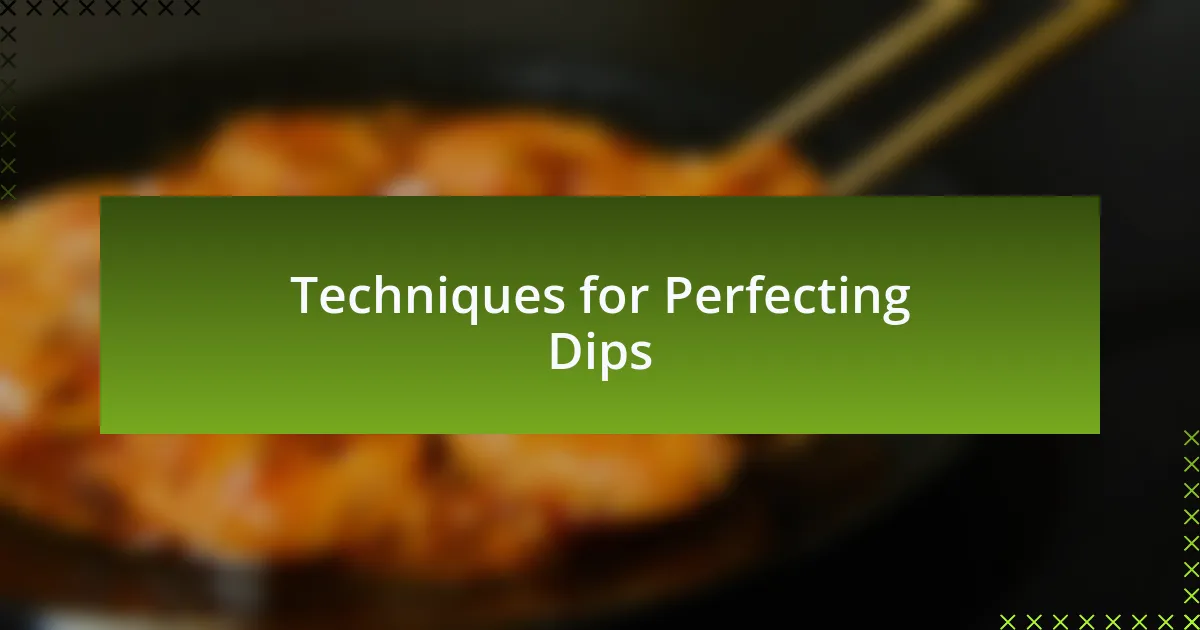
Techniques for Perfecting Dips
To achieve the perfect texture in your Middle Eastern dips, blending is key. I’ve found that using a high-powered food processor can make a world of difference; it’s about creating that silky smooth finish that invites guests to dive right in. Have you ever noticed how the right machine can turn a simple mixture into a gourmet experience?
In my experience, letting the dips rest for a few hours—or even overnight—allows the flavors to meld beautifully. I remember preparing a batch of hummus and forgetting it in the fridge until the next day. When I finally tasted it, the amalgamation of garlic and lemon was impeccably balanced. Don’t you think that waiting can sometimes yield the most delightful surprises?
Finally, presentation matters immensely when serving dips. I take extra care to create an enticing arrangement, whether it’s drizzling olive oil over the top or scattering pomegranate seeds for that vibrant pop. One time, I garnished my baba ghanoush with a few roasted pine nuts and fresh herbs; the visual appeal had everyone reaching for more. How do you elevate the presentation of your dips to match their deliciousness?
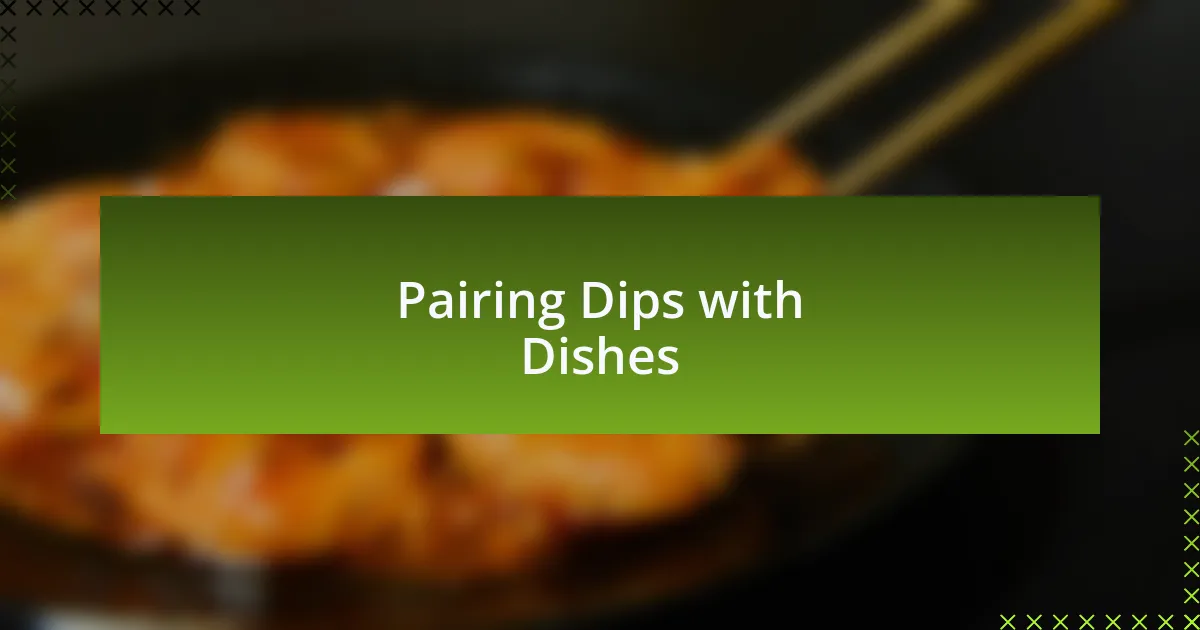
Pairing Dips with Dishes
Pairing dips with the right dishes can elevate the dining experience into something truly remarkable. For instance, I’ve often served my velvety hummus alongside warm, fluffy pita bread. The way the warm bread almost hugs the dip brings a comforting element, making the experience feel both homely and indulgent. Have you ever thought about how that perfect combination can transport you to a bustling market in the heart of the Middle East?
When I create a mezze platter, I find that balancing flavors is essential. Picture this: a tangy tzatziki sits next to spicy muhammara, married with fresh veggies and crispy falafel. The interplay of coolness, heat, and crunch on the palate is delightful. It’s a dance of flavors that keeps everyone at the table intrigued. How do you choose dips that complement rather than compete with each other?
I’ve also learned that serving dips with robust entrees can enhance the overall meal. Recently, I paired a rich, smoky baba ghanoush with grilled lamb skewers. The dip added an earthy contrast to the dish, enhancing its savory notes. It made me realize how certain dips can not only accompany but actually elevate the star of the plate. What combinations have you tried that surprised you with their harmony?
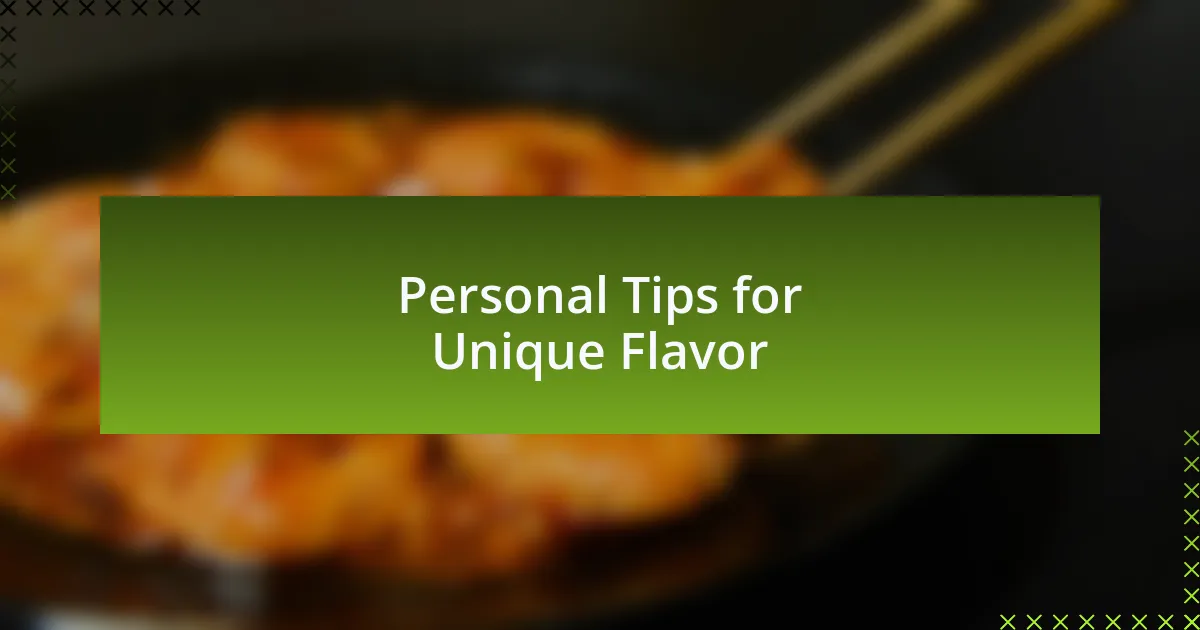
Personal Tips for Unique Flavor
When it comes to adding a unique flavor twist, I often experiment with unexpected ingredients like pomegranate molasses or toasted pine nuts. I remember one time I sprinkled a bit of pomegranate molasses over my hummus, and it transformed the dip into a tangy-sweet explosion of flavor that left my guests raving. Have you ever tried a simple adjustment that took a dish from ordinary to extraordinary?
Another approach I love is infusing fresh herbs into my dips. For example, blending mint into a classic tzatziki created a refreshing kick that transported me to sun-drenched gardens. The brightness of the herbs invigorates even the richest dips, making them feel lighter and more vibrant. What fresh flavors do you think could elevate your favorite dips?
Lastly, I believe that texture plays a crucial role in crafting unforgettable dips. The first time I added a bit of crushed roasted garlic to my baba ghanoush, the depth it brought was incredible. It wasn’t just the flavor; it was the way the crunch complemented the creaminess, creating a mouthfeel that made every bite an experience. Have you thought about how texture can enhance the overall flavor profile of your dishes?